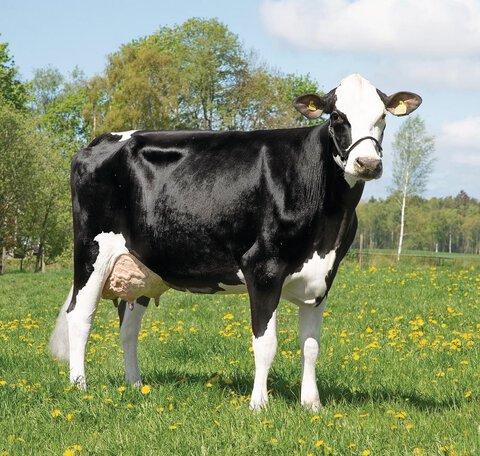ProCROSS is a 3-breed rotational crossbreeding system combining VikingHolstein, VikingRed and Coopex Montbéliarde, which is suitable for herds adopting intensive production.
The benefits of the ProCROSS system have been proven in the 10-year ProCROSS study led by the University of Minnesota, USA, the results of which were published in 2019. The study is the most important scientific trial into crossbreeding dairy cattle undertaken to date.
The trial was conducted on seven dairy herds in Minnesota, USA. 3,550 Holstein cows were committed for the foundation.
One of the conclusions from the Minnesota study was improved fertility. The study showed that ProCROSS cows have +10pts in their Conception Rate compared to Holstein cows.
In the second and third lactations, the conception rate to first service was 35% for Holstein cows compared to 45% for ProCROSS cows. This means that Holsteins had to be bred 2.4 times compared to 1.9 times for ProCROSS cows.
The proportion of cows that calved again within 14 months was significantly higher for ProCROSS cows than for Holstein for all parities.
|
|
Holstein
|
ProCROSS
|
Difference
|
|
Conc. rate at 1st AI. (2nd & 3rd Lact)
|
35%
|
45%
|
+10 %-points
|
|
Open days (2nd & 3rd Lact)
|
134 days
|
114 days
|
-20 days
|
|
1st Lact. calved again within 14 months (%)
|
62%
|
69%
|
+7 %-points
|
|
2nd Lact. calved again within 14 months (%)
|
48%
|
65%
|
+17 %-points
|
|
3rd Lact. calved again within 14 months (%)
|
38%
|
63%
|
+25 %-points
|
Fertility results in the 10-year Minnesota study




